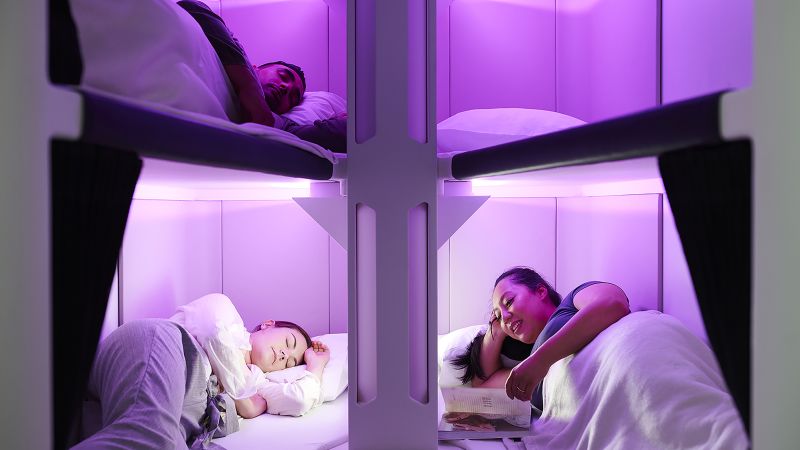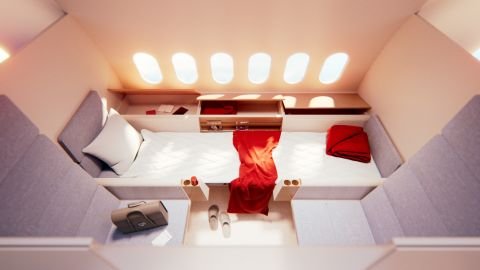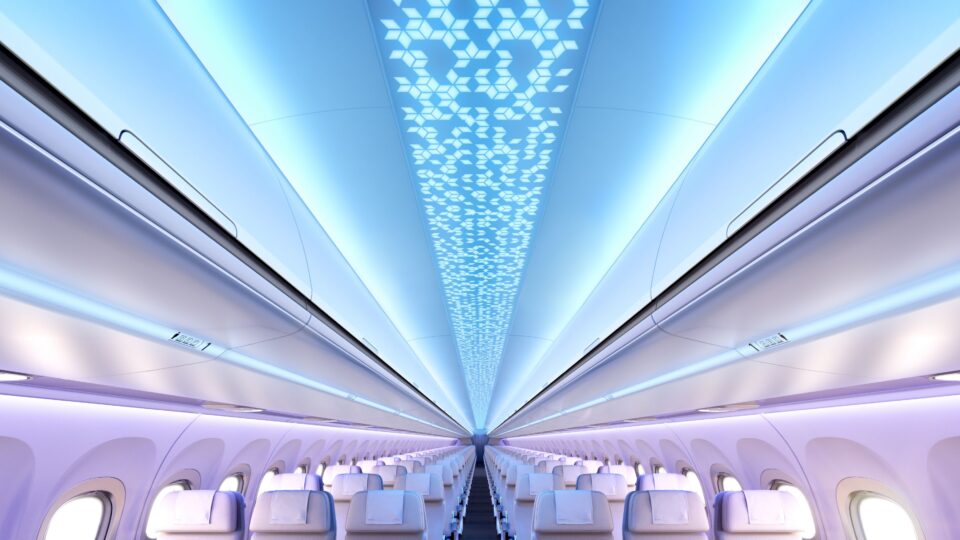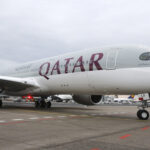The 2023 Crystal Cabin Awards shortlist for innovative aviation concepts
This year’s shortlist for the Crystal Cabin Awards gives a fascinating look into the potential future of aviation, from a cabin concept that completely eliminates the middle seat to a sleek design that elevates single-aisle aircraft business class.

The Crystal Cabin Awards promote fresh concepts that reinvent the in-flight experience each year. There are eight categories, and the awards highlight everything from environmentally responsible innovations—like a German airline Lufthansa’s suggestion for an AI-based food waste app—to cutting-edge ideas straight from the university lecture hall.
After the uncertainty of the peak pandemic years, according to Julia Grosser, a spokesman for the Crystal Cabin Award Association, this year’s nomination demonstrates aviation is turning a corner.
In response to the “substantial innovation seen even in economy class – from bunk beds to greater internet,” Grosser tells CNN Travel that “airlines, manufacturers, and suppliers are heavily investing in their onboard products again.”
Airborne invention
Air New Zealand’s “Skynest” proposal, which envisions bookable sleeping pods made up of six lie-flat bunk beds, is one of the selected cabin improvements. It was created to provide economic long-haul travellers with the opportunity to get some quality rest.

As a small nation at the bottom of the globe, Kerry Reeves, Air New Zealand’s head of aircraft programs, said, “Long-haul travel is essential to keeping us connected and allowing tourists to visit our wonderful country. SkyNest was inspired by Air New Zealand’s conviction that travelers ought to be able to “have a nice rest, no matter the cabin,” in Reeves’ words.
The pods are set up like bunk beds, with two rows and three beds in each. They can be reserved for up to four hours.
SkyNest is a project that Air New Zealand has been working on for a while; the initial design was unveiled in 2020. Reeves reports that the airline is currently “going through the in-depth certification and engineering complexity of having the Skynest on our new 787 aircraft” in an effort to bring the proposal to fruition.
Several prototypes have also been produced by Air New Zealand. It is currently debating if it can send one to the Hamburg Airline Interiors Exhibition in 2023, where the Crystal Cabin Award Association will be announcing its 2023 winners. Adient Aerospace’s “Front-Row Business Class Retreat,” created in collaboration with Boeing EnCore Interiors, is one of the other concepts that made the shortlist.
The inspiration for the idea, which has been under development since early 2022, came from “the design problem of bringing a wide-body experience to a narrow-body cabin,” according to Stephanie Faulk, director of sales and marketing at Adient.

According to Faulk, narrow-body aircraft are increasingly taking on long-haul operations and traveling farther. As a result, there is a natural need for more comfort and amenities similar to those found in wide-body aircraft.
On wide-body airplanes, business class can be a highly upscale experience, but on narrower planes, it typically just offers a little bit more leg room and some upscale food and drink.
An elevated short-haul business class was conceptualized by Adient and Boeing Encore Interiors, with a lie-flat bed, tons of luggage storage, a minibar, a library, and room for an additional passenger to join you for a conference or catch-up.
According to Faulk, airlines have already expressed “a lot of interest” and “good feedback” about the idea.
While Adient’s design adheres to the constraints of currently used cabin layouts, Taller De Arquitectura T36’s “Multicabin” proposal aims to totally redesign the interior of an airplane.
On two storeys, Taller De Arquitectura T36 envisions three distinct economical cabins. The designers want to “say goodbye to middle seats,” they claim. Real windows and virtual windows are mixed together in the design.
Even though the emergency exit situation is less evident, the design would increase the amount of seats in the cabin, which is always appealing to airlines.
Another design for a new airplane seat that has been shortlisted is called Euphony. It was developed by French aircraft interior designer Safran Seats in partnership with audio technology company Devialet with the intention of enhancing inflight entertainment.
There is no longer a requirement for a personal headset with Euphony. Instead, custom-tuned speakers are placed in the headrests of each seat so that passengers can enjoy their preferred in-flight entertainment without being overheard or bothered by their neighbor.
Euphony is not a replacement for the cocoon-like feeling of noise-canceling headphones, but it is a comfortable setup and feels more like watching a movie on your couch, according to CNN Travel, which checked out the idea at the Aviation Interiors Expo last year.

The “University” category of the Crystal Cabin Award provides a window into the thinking of the upcoming generation of aircraft designers.
Grab Joshua Nilsson’s Tilde Aviation Idea, created by the Scottish artist who graduated from the Savannah College of Art and Design.
It envisions an enclosed, private in-air suite that would be perfect for travellers flying in a group, and was originally Nilsson’s senior thesis at university.
Four chairs placed across from one another in the suite can be converted into lie-flat beds.
Nilsson tells CNN Travel that happy recollections of family vacations served as his inspiration.




